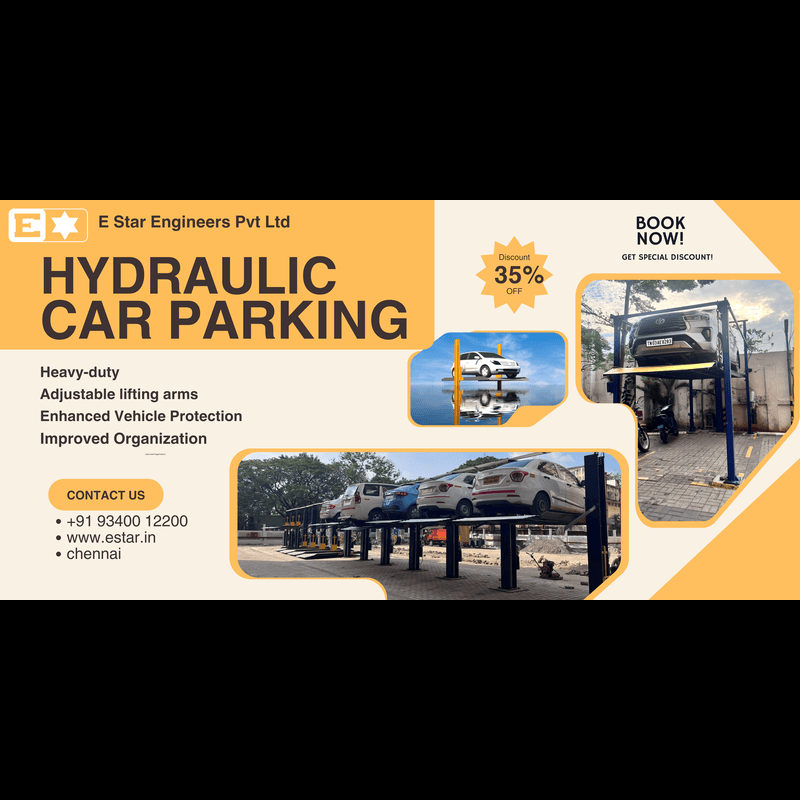Efficient parking systems are a cornerstone of urban infrastructure, addressing the growing challenges of vehicle congestion and limited space. The Two-Post Hydraulic Parking System has emerged as a game-changing innovation, offering a practical and cost-effective solution to modern parking woes. This article delves into the design, functionality, benefits, and applications of this system, highlighting its significance in transforming urban spaces.
What Is a Two-Post Hydraulic Parking System?
The Two-Post Hydraulic Parking System is an advanced mechanical parking solution that maximizes vertical space by utilizing hydraulic mechanisms. It features two sturdy posts and a movable platform powered by hydraulic technology, allowing vehicles to be stacked vertically. This system is ideal for areas where space is a premium, such as residential complexes, commercial establishments, and urban centers.
How Does the Two-Post Hydraulic Parking System Work?
H3: Components of the System
- Two Posts: Provide structural stability.
- Hydraulic Pump: Drives the lifting and lowering mechanisms.
- Platform: Supports the vehicles during operation.
- Control Panel: Facilitates user operation.
H3: Step-by-Step Functionality
- Vehicle Entry: The first vehicle is parked on the platform.
- Hydraulic Lift: The platform lifts the first vehicle vertically.
- Second Vehicle Parking: Another vehicle is parked underneath the lifted platform.
Key Benefits of the Two-Post Hydraulic Parking System
H3: 1. Space Optimization
This system effectively doubles the parking capacity without requiring additional ground space.
H3: 2. Cost-Efficiency
Compared to constructing multi-level parking structures, the two-post system offers a significantly lower installation cost.
H3: 3. User-Friendly Design
Its straightforward operation makes it accessible to users with minimal training.
H3: 4. Versatility
Applicable in a wide range of environments, from private garages to bustling urban hubs.
Types of Two-Post Hydraulic Parking Systems
H3: 1. Single-Level Hydraulic Lift
Ideal for residential use, this basic model accommodates two vehicles.
H3: 2. Multi-Level Hydraulic Lift
A more advanced model suitable for commercial spaces, allowing parking across multiple levels.
Safety Features of Two-Post Hydraulic Parking Systems
H4: 1. Load Sensors
Ensure the platform does not exceed its weight capacity.
H4: 2. Emergency Stop
Equips users with a quick mechanism to halt operation during an emergency.
H4: 3. Anti-Fall Mechanisms
Prevents the platform from descending unexpectedly, ensuring vehicle safety.
Applications of Two-Post Hydraulic Parking Systems
- Residential Complexes: Alleviates parking challenges in high-density housing areas.
- Commercial Establishments: Boosts parking capacity in offices and retail spaces.
- Public Parking Lots: Enhances parking availability in urban centers.
Maintenance Tips for Longevity
H3: Regular Inspection
Frequent checks of hydraulic components and structural integrity are essential.
H3: Lubrication of Moving Parts
Ensures smooth operation and reduces wear and tear.
H3: Professional Servicing
Periodic servicing by trained technicians extends the system’s lifespan.
Future of Hydraulic Parking Systems
As urbanization accelerates, innovations like the Two-Post Hydraulic Parking System are becoming indispensable. With ongoing advancements in automation and materials, the future holds immense potential for smarter and more efficient parking solutions.
Conclusion
The Two-Post Hydraulic Parking System stands out as a versatile, cost-effective, and space-saving solution for modern parking challenges. By integrating robust technology with user-friendly designs, this system paves the way for a smarter urban infrastructure. Investing in such solutions not only addresses current parking constraints but also sets the foundation for sustainable urban development.




